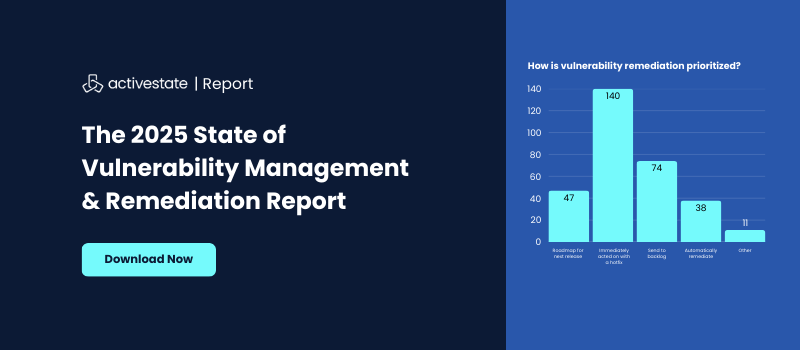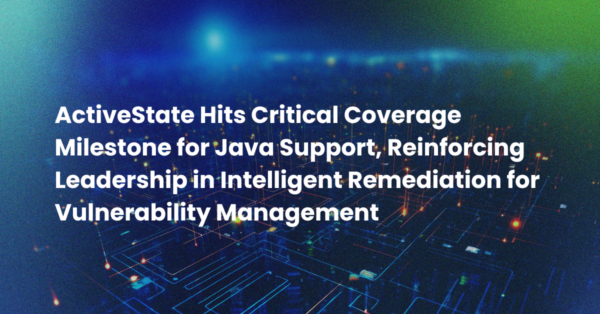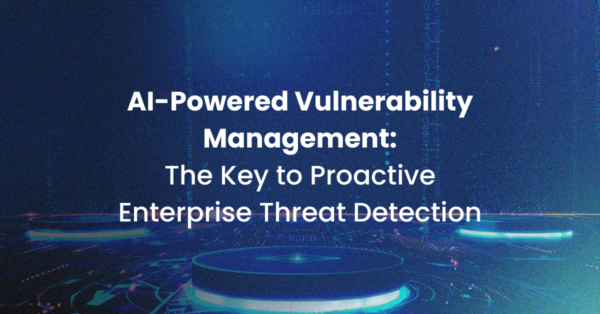Today’s DevSecOps teams are overwhelmed by the sheer volume of vulnerabilities and risks they must address. There’s an alarming disconnect between the massive amounts of cyber security data available and how to put remediation into action.
A key hurdle is the ‘last mile problem’ where organizations struggle to move from identifying security issues to actually implementing fixes. This gap in the process can leave teams exposed to critical vulnerabilities for far too long, putting both security and business operations at risk.
Forward-thinking enterprises are now turning to ASPM and intelligent remediation solutions to help solve the last mile problem, leveraging automation and AI to close the gap. In this article, we’ll discuss the power of combining ASPM and intelligent remediation to improve your software supply chain security.
What is ASPM and intelligent remediation?
ASPM and intelligent remediation are like the power-couple of cybersecurity.
Application Security Posture Management (ASPM) is a framework that helps teams continuously access, monitor, and improve the security of their applications across the entire software lifecycle.
ASPM involves three critical steps:
- Discover: Identify and catalogue all applications. Evaluate applications for vulnerabilities and threats.
- Prioritize: Prioritize findings based on the potential impact and imminent risk.
- Remediate: Detect and patch software fixes and vulnerabilities, and implement important security controls. Ensure systematic adherence to governance and policy. Monitor and enforce security policies.
Intelligent remediation addresses the Prioritize and Remediate steps, taking an AI- and automation-driven approach that goes beyond just vulnerability detection. It takes smart actions to prioritize the open source vulnerabilities that matter, recommend remediation paths based on risk appetite and corporate policies, remediate vulnerabilities without breaking changes so companies can quickly and confidently address cybersecurity issues. Essentially, intelligent remediation solutions help manage vulnerabilities at scale.
Traditional vulnerability management is broken
Vulnerability management as we know it is simply not working. DevSecOps teams have gone from busy to underwater trying to identify and remediate threats while still meeting project deadlines and dealing with budget cuts.
Some teams are opting to just avoid software fixes or remediations altogether, while others who choose to remediate take an average of 270 days to deploy a fix. So, what gives? Why is traditional vulnerability management no longer working?
- Manual processes: With so much data spread across way too many platforms, DevSecOps teams are wasting precious time manually identifying threats, researching which are the most critical, and deploying fixes.
- Lack of visibility: Disparate tools and a mismash of source code make it difficult to get visibility into application dependencies, assess potential breaking changes, and accurately prioritize risk.
- Misalignment between teams: Developer and security team’s goals are at odds. Leaders aren’t aligned on how to manage security issues throughout the SDLC, leading to misaligned expectations.
All these challenges ladder up to what we call the ‘last mile problem’. The gap between the data and knowledge of issues and being able to implement meaningful improvements.
How ASPM and intelligent remediation work together to solve the last mile problem
Intelligent remediation can help you finally close the gap on the last mile problem. For enterprises, implementing ASPM at scale without the support of technology is going to be extremely challenging. Don’t make it harder than it has to be for yourself and your teams.
Here’s how with the right intelligent remediation tool, you can streamline ASPM and cybersecurity best practices across your entire SDLC.
1. Get comprehensive visibility with ASPM
When considering the first step of ASPM, Discover, it’s important to always have an up-to-date and accurate security assessment of your applications and dependencies. Opting for a platform that not only auto-generates a software bill of materials (SBOM), but also actively ingests and scans them for vulnerabilities will help you continuously assess your security posture and avoid blind spots.
2. Automate risk-based prioritization
Prioritization is not only one of the most challenging parts of the last mile problem, it’s also the second step in ASPM. With so much data, teams can be at a loss with how to start prioritizing which vulnerabilities could have the highest potential for impact. What’s worse, researching vulnerabilities and then assessing which ones you need to take action on can take hundreds of working hours. And during those precious hours, your applications may be exposed to bad actors. Using AI, intelligent remediation solutions can help prioritize critical vulnerabilities based on real risk assessments and assess the risk of breaking changes, so your team can focus on the most critical issues.
3. Make fixes with automated remediation
The last step of ASPM, Remediation, can also be supported by intelligent remediation. A platform like ActiveState can present recommended remediation paths based on risk and policies, giving you the ability to choose what solution works best for your team. ActiveState does this better than anyone because our remediation engine is backed by a curated catalog of more than 40M open source packages, dependencies, containers, and the like. Then, securely build open source packages from source, and easily and quickly deploy fixes into production.
4. Streamlined deployment in CI/CD pipelines
You aren’t really secure until fixes are deployed into production which is why you should choose an intelligent remediation solution that seamlessly integrates with your existing development workflows. With a minimal learning curve, you can deploy secure fixes quickly.
Benefits of powering ASPM with intelligent remediation
Investing in intelligent remediation is well worth it. Here’s why:
1. Enhance your security posture
At the end of the day, improving your overall security is the name of the game. ASPM with intelligent remediation helps you proactively identify and resolve vulnerabilities so you can minimize your exposure window. It also provides a framework for continuous improvement, allowing your team to get better and better.
2. Improve operational efficiency
DevOps and security teams are overwhelmed with asks. There’s not enough time in the day to do it all. An intelligent remediation/ASPM platform can function like an additional member of your team. By automating away manual and time-consuming tasks, you can free up more time for your teams to focus on strategic, higher-value work.
3. Faster time-to-remediation
The less time you’re exposed to vulnerabilities the better. Intelligent remediation can help you identify, prioritize, and remediate issues more quickly, reducing your Mean Time to resolution (MTTR) from hundreds of days to just dozens of hours.
4. Improved compliance
Not only can intelligent remediation and ASPM platforms help with vulnerabilities, they can also help you keep tabs on compliance issues and avoid costly penalties. With an automatically-generated SBOM, a smart solution can continuously monitor if you’re using source code compliantly and that you’re up to licensing standards. Complying with internal policies and and required regulations can be simplified by allowing developers access to only the approved open source components during their development process.
Best practices for successfully adopting ASPM and intelligent remediation
Before you implement ASPM and intelligent remediation into your processes, keep the following best practices in mind:
- Evaluate your current application security posture with an ASPM framework. You can also consider looking at your DevSecOps Maturity Score to assess and track the progress of your cyber security journey.
- Procure and implement a solution or tool that offers both ASPM capabilities and intelligent remediation for open source. This will help you avoid even more tool sprawl and keep your data centralized.
- Encourage collaboration between DevOps and security teams. For a seamless ASPM integration, both teams will need to be involved and have their voices heard.
- Continuously monitor and refine your processes using feedback from ASPM insights. Remember, ASPM is a continuous cycle designed to help you get better incrementally over time.
Conclusion
Adopting ASPM solutions with intelligent remediation is a game-changer for enterprises looking to enhance their software supply chain security.
By automating threat detection, prioritization, and remediation, teams can close the gap on the ‘last mile problem’ and get more time back to focus on strategic priorities. Intelligent remediation not only accelerates time-to-remediation, but also enhances operational efficiency and boosts compliance.
Explore ActiveState’s robust end-to-end ASPM platform today, or book a demo.







